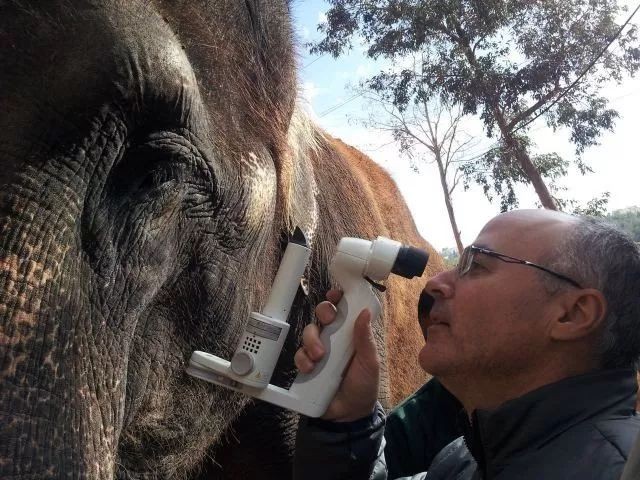
CSAVS Feline Opthalmology workshop (wet lab included)
Speaker: Dr. Ron Ofri
Date: 2020 June 8-11
Venue: CSAVS Nanjing facility, Room 1701-1706, Building D1, #32 Dazhoulu, Yuhuatai District, Nanjing, China
Course Tuition: 1100 USD/Person
( Accomodation not included, Chinese style lunch included )
Speaker Introduction:
Dr.Ron Ofri
DVC,PhD,DECVO
Ron Ofri currently works at the Koret School of Veterinary Medicine, Hebrew University of Jerusalem. The co-author of Slatter's Fundamentals of Veterinary Ophthalmology
Course Schedule:
Day 1 2020 June 8
Morning
Title: Ophthalmic examination made easy!
Short summary: Ophthalmic examination should not be complicated or expensive! All that’s required is a good light source, a few accessories and drugs, and an understanding of the anatomy of the eye.
Title: Feline conjunctivitis. It all about herpes and stress!
Short summary: More than 80% of the cats in the world are carriers of feline herpes virus, and stress is a major factor in viral shedding. So it is not surprising that treatment of feline conjunctivitis and keratoconjunctivitis is so frustrating and challenging. Learn all about the pathogenesis and clinical approach to feline conjunctivitis and keratoconjunctivitis.
Afternoon
Title: Why do cats go blind?
Short summary: Due to the popularity of pure-bred dogs, our canine patients suffer from a number of (mostly inherited) intraocular diseases including cataracts, retinal degeneration and glaucoma. In cats, the most common intraocular disease is uveitis. Many of the causes are systemic diseases that are potentially fatal, and patients frequently become blind, so proper diagnosis and treatment are crucial. Hypertensive retinopathy, glaucoma, and other causes of blindness are also discussed.
Day 2 2020 June 9
Morning
Title: A cat is not a small dog! Eye diseases we see only, or treat differently, in cats
Short summary: Some eye diseases such as symblepharon and corneal sequestrum, are unique to cats. Others, such as cataracts and inherited retinal degeneration, are common in dogs and rare in cats. And there are diseases such as conjunctivitis and uveal melanoma that are seen in both dogs and cats, yet our clinical approach will depend on the species we are treating. In this talk we shall realize that in ophthalmology, a cat is not a small dog!
Afternoon
Title: What eyes diseases make you enucleate a cat – and what does histopathology teach us?
Short summary: We cannot save all eyes and sometimes the best option will unfortunately be to enucleate. This lecture will repeat many of the ocular diseases from the other lectures but discusses the clinical and histopathology outcome when treatment is not enough and the eyes are enucleated. We can learn a lot from histopathology of the enucleated eye. It is therefore recommended to submit all enucleated eyes for histopathology evaluation since in some cases you will be surprised by the underlying cause or lack of treatment response and sometimes clinical and histopathology diagnosis fits perfectly together.
Day 3 2020 June 10
Morning
Title: Let’s play a game! Interactive slide recognition
Short summary: Ophthalmology is all about pictures! This is an interactive slide recognition session, based on the Kahoot voting system. The audience is presented with a slide and 4 possible answers. Participants use their smartphones or IPads to vote for the correct answer. The system awards points for correct answers, based on how quickly the question was answered. Results of the vote are then displayed on the screen and discussed.
Afternoon
Feline opthalmic examination wetlab.
Participants will rotate between 4 stations in which they will practice:
1. Anterior segment examination
2. Diagnostic testing - Eye reflexes, fluorescein staining, STT, IOP
3. Direct ophthalmoscopy
4. Indirect ophthalmoscopy (monocular/binocular)
Day 4 2020 June 11
Feline microsurgery wetlab – all day
Summary – the day will start with a lecture regarding basic knowledge and techniques when performing microsurgery to corneal tissue.
Participants will following the lecture receive pig eyes to perform microsurgery on. The participants will receive training in how to use microsurgery instruments and small suture sizes when performing surgery to the cornea. Magnification loupes (2.5 or 3.5 times magnification) are recommended to bring for this wetlab.
Following microsurgeries will be performed during this wetlab:
1. Keratectomy
2. Conjunctival graft
3. Cornealconjunctival transposition